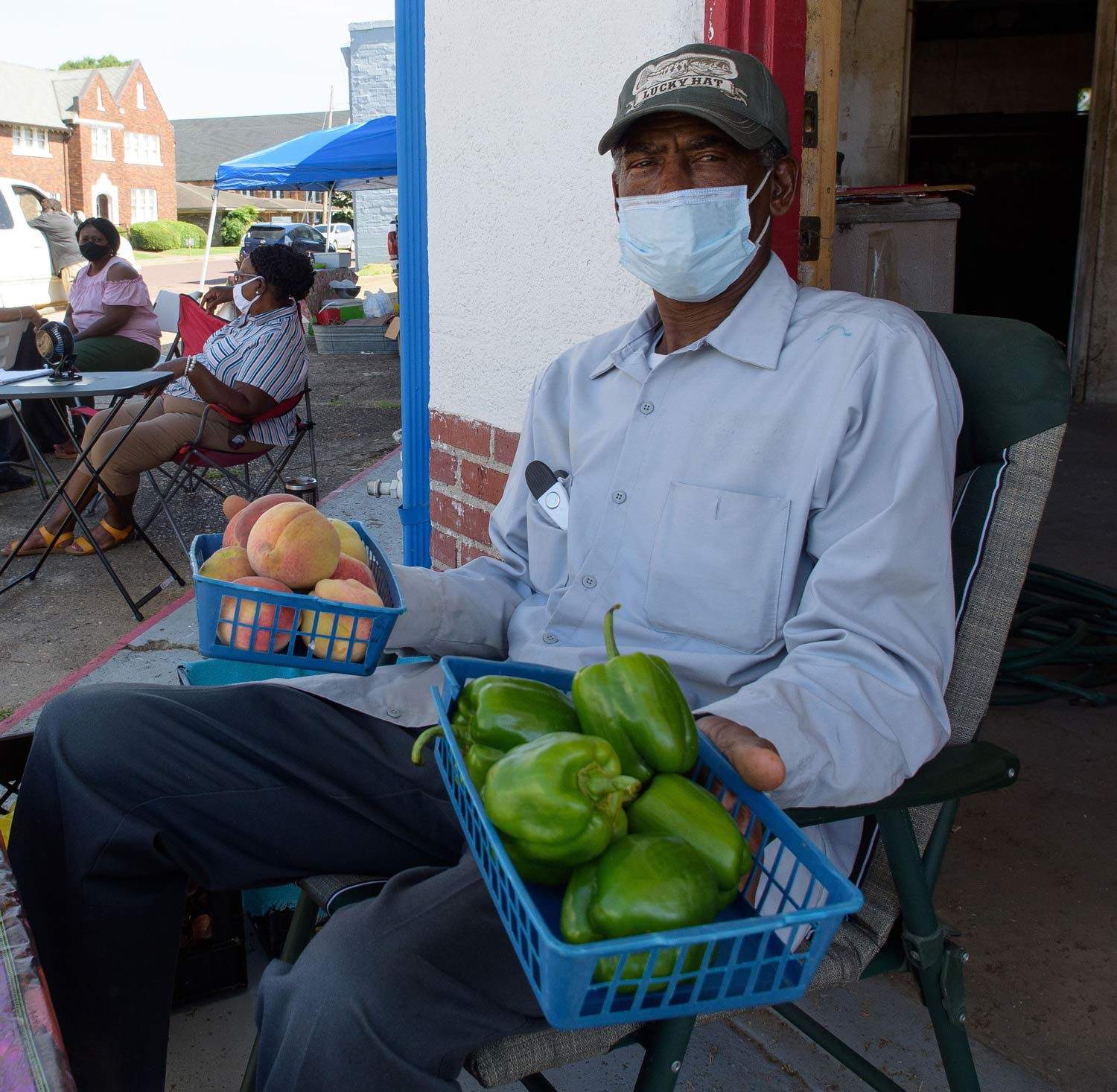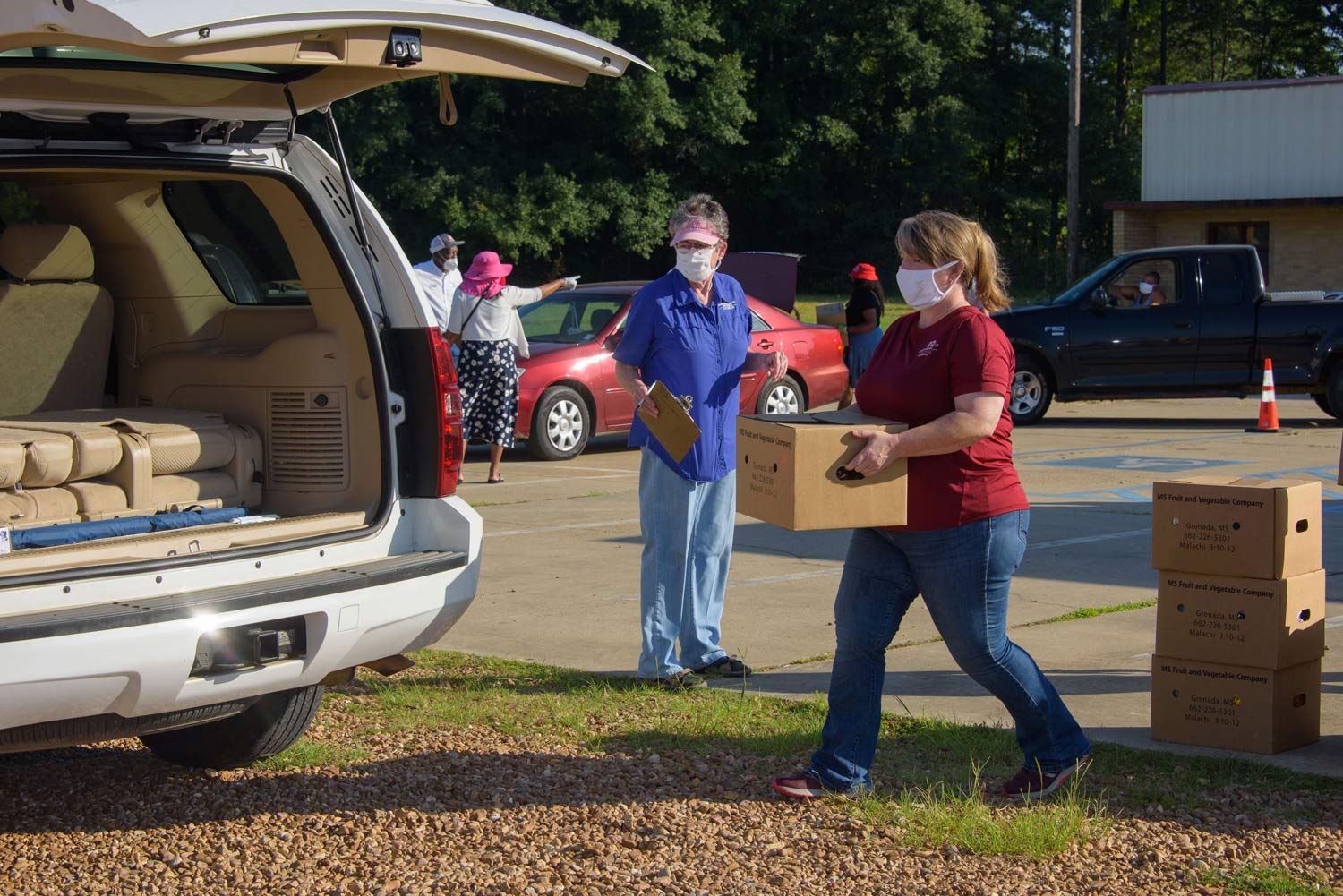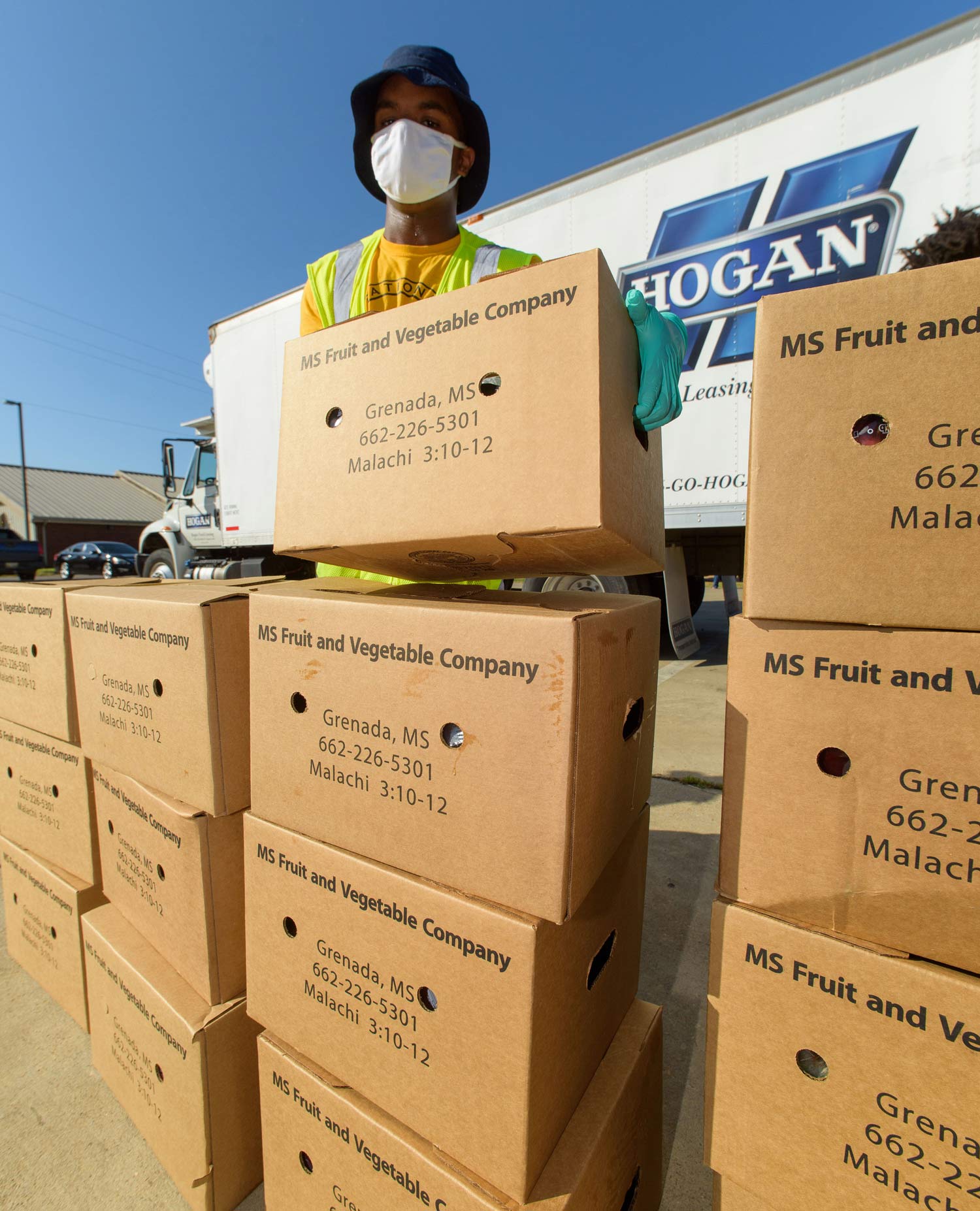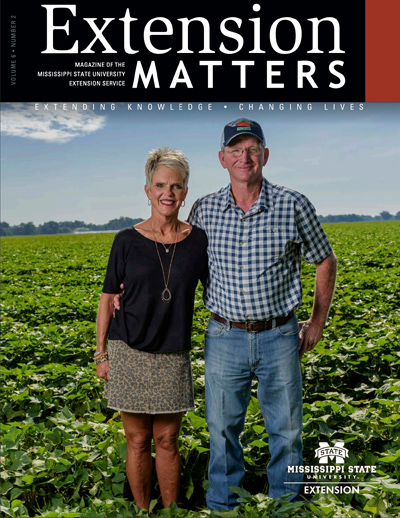Extension Where You Are

Lexington Mayor Robin McCrory points to Extension as being the inspiration for the Lexington Food Pantry.
Lexington coalition organizes food giveaway amid pandemic
Story by Leah Barbour • Photos by Kevin Hudson
When the Guardian (U.S. edition) released its article “In the poorest county, in America’s poorest state, a virus hits home: ‘Hunger is rampant’” in early April 2020, a local coalition in Holmes County had already organized to create a food pantry in Lexington.

during the pandemic.
The county’s designation as the poorest is accurate, but Lexington coalition members were not consulted for the article. Neither was Lexington Mayor Robin McCrory, who is also a member of the community advocacy group.
McCrory points to the Mississippi State University Extension Service AIM for CHangE initiative, also known as Advancing, Inspiring, and Motivating for Community Health through Extension, as providing the initial momentum to develop the nonprofit Lexington Food Pantry (LFP).
“The group of individuals with the Lexington Food Pantry saw that food insecurity was a problem, so they sent in paperwork to the Mississippi Food Bank to qualify as a food pantry, but, due to COVID- 19, all applications were put on hold,” McCrory explains.
Since then, collaborations with the Mississippi Food Network (MFN); the Farm to Family Food Box Program, overseen by the U.S. Department of Agriculture (USDA); and Blue Cross Blue Shield of Mississippi (BCBS) have led to regular food giveaways during the pandemic.
Video by Brian Utley

Lexington was one of only three BCBS Healthy Hometown Award grant recipients in 2019. As the pandemic hit and the Guardian (U.S. edition) article came out, BCBS leaders contacted McCrory and allocated money for mobile food distribution in Lexington. With MFN’s support, partnerships and resources were in place to begin food distribution in May.
At the first drive-through giveaway, May 2, volunteers with LFP served 350 households. The mobile pantry, held in the local multipurpose building parking lot, continued May 22 with the USDA’s Farm to Family Food Box Program.
Each Friday over the summer, hundreds of boxes filled with fresh fruits and vegetables were distributed. Since the Guardian’s (U.S. edition) article was released, donations to create LFP have been accepted, and work continues in earnest to open a permanent location that serves residents who need food assistance.
Each box supports a family of four, says Marven Cantave, Extension agent for AIM for CHangE in Holmes County, so the first giveaway fed about 1,400 people. By June, the boxes of food given away steadily increased to about 800 weekly, feeding about 3,200 people each week. The program continued through August.

people weekly.
“I’m so proud of our residents coming together to form the LFP and lead these efforts,” McCrory reflects. “We’ve got our masks on, the people coming though have their masks on, and they say, ‘Thank you, thank you.’ So many people are grateful; this helps to supplement our residents’ diets and take pressure off their budgets due to COVD-19. It makes you realize, you may not be reaching 100 percent, but you’re reaching some of the most vulnerable.”
Pickups at the multipurpose parking lot are divided into two car lines: one for the general public (one box per vehicle) and one for churches (as many as 10 boxes). The church pickups are then distributed to people who do not have transportation to get to the pickup site or are in the populations most vulnerable to COVID-19.
“We have it down to a science. We open the drive-through, they stop and pop the trunk, we drop the food in, and they move on. If we start at 8 a.m., we’ll be done by 10 a.m.,” McCrory says.
“People are the most important resource in a community,” she continues. “The way you make things happen is by being inclusive and coming together as the LFP and Extension have done; Extension is like your instructional booklet on how to increase and develop community resources. The people who always show up are with the Extension Service. It’s good to have a partner you can count on to provide knowledge and information.”


